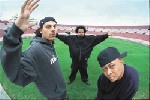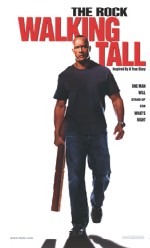 LINDA
Cardellini
LINDA
Cardellini
The
Real Velma
Linda
Cardellini's neither freaky, nor geeky, as the title of her former
TV series or portrayal of Velma Dinkley might suggest. The super foxy
actress is capable of playing a nerdy girl, like the cartoon character
she brought to life in the Scooby-Doo movie, as convincingly as she
portrayed a fully dimensional, sensitive student in Freaks and Geeks.
Linda first gained
recognition playing high school student Lindsay Weir in the short-lived
NBC series Freaks and Geeks (1999-2000). A supporting part in Legally
Blonde (2001) and a co-starring role as Velma in the 2002 mega-hit
Scooby-Doo have been two of her recent big-screen appearances.
Linda Edna Cardellini
was born in Redwood City, California on June 25th, 1975, the youngest
of four children. She made her public performing debut at the age
of 10, when she sang a song in a school play. She was immediately
bitten by the acting bug, and soon began attending drama courses and
getting involved in school productions.
Following her
graduation from Saint Francis High School in Mountain View, California,
she received her first break in 1996 when she landed a starring role
as Sarah on ABC's Saturday morning live-action children's series,
Bone Chillers. She also made guest appearances on prime-time programs
such as Step by Step, Clueless and 3rd Rock from the Sun.
Doing
the film rounds
Cardellini made her movie debut with a small part in the comedy Good
Burger (1997), and next appeared in the 1998 dark comedy Dead Man
on Campus, portraying the girlfriend of a violent college student
(played by her future Freaks and Geeks co-star and boyfriend Jason
Segel). That same year, she played Genevieve Gage, one of Internet
predator Captain Howdy's victims in Strangeland.
She returned to
the small screen during the 1998-1999 season with recurring roles
on Guys Like Us and Boy Meets World, where she was cast as Lauren,
the girl that would come between the show's star couple, Cory and
Topanga. She had a supporting role in the UPN made-for-TV movie Dying
to Live, and received favorable reviews for her portrayal of a young
starlet in 1930s Hollywood in AMC's miniseries The Lot (both 1999).
Cardellini spent the summer of 1999 in Europe as part of a touring
production of Lancelot, a 14th century Dutch tragedy. The highlight
of the tour was a special performance as part of an international
medieval play conference in Italy.
No
freak, no geek
 Her biggest break to
date came when she landed one of the starring roles in the NBC series
Freaks and Geeks, which debuted during the 1999-2000 season. Cardellini's
portrayal of high school student Lindsay Weir received positive reviews,
but despite critical acclaim and a sizable cult following, the show
was canceled mid-season. She began dating co-star Jason Segel in 2001,
the same year she graduated Loyola Marymount University with a degree
in theater. She re-emerged on the silver screen later that year, with
a small part in 2001's hit comedy, Legally Blonde.
Her biggest break to
date came when she landed one of the starring roles in the NBC series
Freaks and Geeks, which debuted during the 1999-2000 season. Cardellini's
portrayal of high school student Lindsay Weir received positive reviews,
but despite critical acclaim and a sizable cult following, the show
was canceled mid-season. She began dating co-star Jason Segel in 2001,
the same year she graduated Loyola Marymount University with a degree
in theater. She re-emerged on the silver screen later that year, with
a small part in 2001's hit comedy, Legally Blonde.
Jinkies!
a howling success
After a part in 2001's The Unsaid (aka The Ties That Bind), Cardellini
co-starred along with Freddie Prinze Jr., Sarah Michelle Gellar, and
a CGI canine in the live-action Scooby-Doo movie (2002). Despite critics'
predictions that the film would flop, it boasted the best June opening
to date. Cardellini joined the cast of NBC's ER as a free-spirited
single mom, Nurse Samantha Taggart, in the fall of 2003. You can catch
Cardellini in the recently released La La Wood, and in Scooby-Doo
2: Monsters Unleashed, set for release in 2004.
 Aerosmith:
Honkin' On Bobo
Aerosmith:
Honkin' On Bobo
Review
by Ken Micallef, Launch
His ego bloated
by years of lip curling excess and larynx shredding dementia, Steven
Tyler is a wasted rock star in the truest sense of the word. But Honkin'
On Bobo proves that when the scrawny singer gets out of the way, Aerosmith
is still a smoking rock 'n' roll powerhouse with more passion and
guts than most preening punk rockers half their age.
Led by the mighty
Joe Perry, who sounds like he is itching for a fight and revenge,
Aerosmith walk a thin line between electric blues and early rock 'n'roll,
the album sounding at times like a lost Sun session broadcast from
deep outer space. The production is shrill but the band is soulful.
Aerosmith is a band reborn, especially in slow, driving numbers like
the grueling "Back Back Train" and the molten "I'm
Ready." Tyler still plays the circus barker (and some killer
harmonica) on "Road Runner" and the lone original track,
"The Grind," but he can't stop the gleeful thrill of rockers
like Straycat rave-up, "Shame, Shame, Shame," or the Bo
Diddley strut of "You Gotta Move." Perry is ferocious and
omnipotent, guiding the band like a man possessed in the midnight
prowl of "Back Back Train," the slamming shuffle breakdown
of "Temperature" (with blues great Jimmie Johnson on piano),
and Stevie Ray Vaughan send-up, "Stop Messin' Around" (with
Perry on vocals).
Honkin' On Bobo
is a big bruiser of an album, with heart, soul, and fury to spare.
Who knew Aerosmith had anything, much less blues power, still left
alive and well?
Dilated Peoples:
Neighborhood Watch
 “In
a marathon/The artist will win it." That piece of philosophy,
which leads off the third album from Dilated Peoples, is disproven
daily in the meatgrinder of the music biz. But Rakaa, Evidence and
DJ Babu, the members of this L.A. hip-hop trio, are certainly doing
their part to make it a self-fulfilling prophecy. They've maintained
their major label deal without a major hit, and the majority of Neighborhood
Watch builds on the same elemental beats, scratches and deceptively
clever rhymes that have been the heartbeat of the trio's career. It's
almost impossible to assign an era to tracks like "Marathon"
and "Who's Who," and the timelessness of their plain-wrapped,
plain-rapped appeal will help make this album exactly what it claims
to be: a tortoise that can outlast the hares of the mainstream.
“In
a marathon/The artist will win it." That piece of philosophy,
which leads off the third album from Dilated Peoples, is disproven
daily in the meatgrinder of the music biz. But Rakaa, Evidence and
DJ Babu, the members of this L.A. hip-hop trio, are certainly doing
their part to make it a self-fulfilling prophecy. They've maintained
their major label deal without a major hit, and the majority of Neighborhood
Watch builds on the same elemental beats, scratches and deceptively
clever rhymes that have been the heartbeat of the trio's career. It's
almost impossible to assign an era to tracks like "Marathon"
and "Who's Who," and the timelessness of their plain-wrapped,
plain-rapped appeal will help make this album exactly what it claims
to be: a tortoise that can outlast the hares of the mainstream.
The Punisher:
The Album
If
you name your movie The Punisher, you'd better not line your soundtrack
with wimpy love ballads. And if you're a new hard rock act looking
to get yourself some street recognition, you're going to want be on
a soundtrack that includes new material from "veteran" bands
such as Queens Of The Stone Age, Drowning Pool, Puddle Of Mudd and
Nickelback. And if you're one of those aforementioned bands, you gotta
feel pretty good knowing that in a few short years you've gone from
unknown entity to "money in the bank." People return your
calls. Your new house isn't just a home, but a feature on MTV's Cribs.
* Life is good. But most importantly, hard rock fans the world over
get a 19-song collection that allows them to size up the competition.
If I were a betting man and these bands were horses, I'd put my money
on Seether (and not just because they're on here twice and once with
Evanescence's Amy Lee--though that doesn't hurt), Hatebreed and former
Alice In Chains man Jerry Cantrell because they know how to deliver
the--get this--punishing blow. Oh, now that hurts.
 Walking
Tall
Walking
Tall
A
movie review by Niloy
The Walking Tall
is a remarkably satisfying movie, considering the facts that the movie
is full of purely uncomplicated parts and the story is pretty much
simple. The movie reminds us of movies of 70's and 80's where people
could be simply classified as heroes or villains. Now a days, the
complexity of the plots and the characters of plots and the characters
of the movies are increasing in such a rate that they are spoiling
the enjoyment the movies offer. So, the Rock's latest movie, featuring
a simple plot, is overwhelmingly enjoyable. And the movie makes the
hours spent watching it worthwhile.
The story is quite
simple. The Rock plays Chris Vaughn, who is an ex-soldier. After an
eight year break Chris returns to his home town and discovers the
town to be infected with crime and corruption. After his own family
becomes the victim of the criminals, he decides to take revenge on
the criminals. And he does take revenge, not in any Kung Fu or Terminator
style, but in the pure, satisfying, remarkable, and motivating style
of beating the living hell out of enemies with a big bad stick and
forgoing rhetorical speeches both before and after the beating. Well,
the stick he uses isn't only a big stick, it is a massive piece of
timber with jagged rectangular edges.
And that's all
the story the movie has. Unrepentantly, nothing unexpected happens
throughout the movie. There are no twists, turns or double crosses.
The good guys and the bad guys stay whatever good or bad they were
throughout the movie; they don't change sides.
The movie has
a praiseworthy cast and they have all performed admirably. Of course,
there is the Rock, with his magnetic personality anchoring the film.
But the supporting team, led by Jhonny Knoxville, don't get unnoticed.
They do deserve kudos as their effort and collective talent provides
the film a level of drama much higher than the movie deserves. Particularly,
Neal McDonough give the Rock a formidable adversary an the two square
off equally well as physical and intellectual opponents.
It
is now confirmed, with the release of this movie that the Rock is
soon going to get the throne of Action movies. He is certainly the
righteous heir of Arnold Schwarzenegger. I, for one, had been favouring
the Rock for a long time as once I was a fan of the WWF. The Rock
is a superhero with a sensitive side, and is someone who you will
find yourself cheering for not because he's the guy with biceps bigger
than your head, but because he seems to use his head and his heart
in conjunction with them. His skills and instincts as an actor develops
as he finishes different projects one by one. Rarely an established
mainstream performer showed such constant charm for his career. With
this film he continues his path to his place in the A-List which he
no doubt seeks. Never has vigilant justice felt so persuasive as he,
with his larger-than-life and undeniably charismatic presence, is
whacking away at the evil with that massive piece of timber.
2004 Geneva Motor
Show:
Rinspeed Splash
A
detailed look at a concept car that can drive, swim, and fly over
water
 Every
year we're impressed by the fanciful designs presented by Rinspeed
Design, and unlike many auto show concepts, these cars usually function
as claimed. This year's technical marvel is the Splash, a 137-hp turbocharged,
natural-gas powered sports car that promises top speeds of 125 mph
on land, but which also turns into a watertight stern-drive amphibious
vehicle thanks to cleverly integrated hydraulics that deploy at the
touch of a button.
Every
year we're impressed by the fanciful designs presented by Rinspeed
Design, and unlike many auto show concepts, these cars usually function
as claimed. This year's technical marvel is the Splash, a 137-hp turbocharged,
natural-gas powered sports car that promises top speeds of 125 mph
on land, but which also turns into a watertight stern-drive amphibious
vehicle thanks to cleverly integrated hydraulics that deploy at the
touch of a button.
 An
additional integrated hydrofoil system enables the Splash to 'fly'
at an altitude of about two feet above the surface and up to speeds
of 45 knots (about 50 mph) on smooth water--fast enough for water
skiing or knee boarding. Splash is built of multi-layered carbon composite
(a state-of-the-art plastic mainly used in Formula One racing) with
buoyancy chambers inside for additional lift on the water--and a bilge
pump, just in case... Purely a concept, the Rinspeed Splash claims
to be the first and only sports car in the world that can drive, swim,
and fly over water.
An
additional integrated hydrofoil system enables the Splash to 'fly'
at an altitude of about two feet above the surface and up to speeds
of 45 knots (about 50 mph) on smooth water--fast enough for water
skiing or knee boarding. Splash is built of multi-layered carbon composite
(a state-of-the-art plastic mainly used in Formula One racing) with
buoyancy chambers inside for additional lift on the water--and a bilge
pump, just in case... Purely a concept, the Rinspeed Splash claims
to be the first and only sports car in the world that can drive, swim,
and fly over water.
PC Game Review
M
A N H U N T
The developer
of Grand Theft Auto delivers its darkest, most violent game yet in
Manhunt, a third-person perspective stealth action game that puts
you in the role of a death row inmate forced to run a deadly gauntlet
at the whim of a sadistic cinematographer. The grisly scenes are done
up in style, as Manhunt has a real cinematic flair to it--not to mention
a suffocating atmosphere that perfectly fits the theme. It also does
a better job of incorporating stealth mechanics than most other such
games, though the latter portion of Manhunt devolves into a nearly
continuous, mind-numbing series of shoot-outs. Manhunt is seriously
intense, and anyone with a stomach for the game's concept ought to
find it fiendishly entertaining.
 There's
no reason to like the main character of Manhunt. At the beginning
of the game, James Earl Cash is presumably about to be put to death--and
with good reason. Something happens, however. The "lethal"
injection he's administered merely knocks him out. He later comes
to and finds himself alone in a cell with an earpiece nearby. He puts
it on, and this is how Cash meets Lionel Starkweather. Starkweather
presents himself as Cash's savior and promises the man his freedom...after
he performs a few key tasks. From this point on, Cash is thrust into
a series of levels, during which he is hunted by ruthless thugs and
must make use of any weapon he can find to dispatch of them--or else
die trying. All this happens to Starkweather's great delight. You
see, Starkweather makes "snuff films" and captures on video
the bloody executions conducted by people like Cash. Cash, it seems,
is Starkweather's latest leading man. The rather original storyline
is very intriguing at first but doesn't really take off. As a result,
it proceeds in predictable directions and essentially just acts as
a setup for Cash so that he can be thrust from one hopeless situation
into another.
There's
no reason to like the main character of Manhunt. At the beginning
of the game, James Earl Cash is presumably about to be put to death--and
with good reason. Something happens, however. The "lethal"
injection he's administered merely knocks him out. He later comes
to and finds himself alone in a cell with an earpiece nearby. He puts
it on, and this is how Cash meets Lionel Starkweather. Starkweather
presents himself as Cash's savior and promises the man his freedom...after
he performs a few key tasks. From this point on, Cash is thrust into
a series of levels, during which he is hunted by ruthless thugs and
must make use of any weapon he can find to dispatch of them--or else
die trying. All this happens to Starkweather's great delight. You
see, Starkweather makes "snuff films" and captures on video
the bloody executions conducted by people like Cash. Cash, it seems,
is Starkweather's latest leading man. The rather original storyline
is very intriguing at first but doesn't really take off. As a result,
it proceeds in predictable directions and essentially just acts as
a setup for Cash so that he can be thrust from one hopeless situation
into another.
Manhunt is directly
comparable to the Tom Clancy's Splinter Cell games and Hitman. By
now, most gamers have experienced stealth gameplay before-- some like
it, and some hate it. Manhunt can be highly suspenseful, and, yes,
it can get quite frustrating at times--especially in the later scenes.
But, for what it's worth, the game does handle certain aspects of
the stealth action formula remarkably well.
Those experienced
with GTA III or Vice City won't have any problems getting started
with Manhunt, especially since Starkweather will conveniently walk
you through the basics when you first begin play. As far as specific
points of comparison, Manhunt's hand-to-hand combat system is basically
a crude, button-mashing affair, just like in GTA.
Guns (including
pistols, shotguns, submachine guns, assault rifles, and even a nailgun)
come into play later on in the game. In the Xbox version, you can
fire the weapons using an auto-aim feature, much like in the GTA series.
You can aim manually as well, and on the PC, you'll have to, though
there's a useful ability allowing you to snap your aim onto the closest
foe. As if to encourage brutal, close-quarters shoot-outs, Cash will
automatically target his foes' heads if you lock onto them from a
short distance away.
Cash can take
a number of hits before dying and will never show any real signs of
fatigue or injury (except for the cuts and bruises you'll see on his
body when he's particularly hurt). Like Max Payne, you recover health
in Manhunt by finding painkillers.
The
great variety of close-range weapons include knives, machetes, axes,
police clubs, sickles, and more; all of these can be used to instantly
kill a foe in three distinctly different ways, and each method is
generally more brutal than the last.
GeForce
Strikes Back
 Nvidia
opens the next-generation graphics card race with today's official
announcement of the Nvidia GeForce 6 GPU series. Code-named NV40,
the GeForce 6 GPU family will soon replace Nvidia's current NV3x-based
GeForce FX line of graphics processing units. And not a moment too
soon, many will add.
Nvidia
opens the next-generation graphics card race with today's official
announcement of the Nvidia GeForce 6 GPU series. Code-named NV40,
the GeForce 6 GPU family will soon replace Nvidia's current NV3x-based
GeForce FX line of graphics processing units. And not a moment too
soon, many will add.
It's no secret that many consider
ATI the winner of the previous architecture cycle, in large part due
to the strength of the Radeon 9700/9800 series design, but also due
to production delays and a handful of miscalculated design decisions
on the part of Nvidia.
The GeForce 6800 Ultra offers twin
DVI outputs and a TV-out. ATI was able to get the Radeon 9700 to market
roughly six months ahead of the GeForce FX because Nvidia tried to
adopt the then relatively new 0.13-micron manufacturing process. Usually
a move to a smaller manufacturing process results in smaller chip
dies and higher potential clock speeds, but Nvidia encountered problems
with the move that resulted in a significant shipping delay. ATI,
on the other hand, used the less efficient but proven 0.15-micron
process to get to market quickly.
When the first GeForce FX did ship,
it only featured a 128-bit memory interface, which required Nvidia
card manufacturers to use faster, more expensive memory just to get
close to the memory bandwidth offered by ATI's 256-bit memory interface.
Nvidia did correct the issue by including a 256-bit memory interface
with the GeForce FX 5900 release, but another crisis emerged when
Valve's Gabe Newell openly criticized the GeForce FX's full-precision
floating point performance under Pixel Shader 2.0.
Nvidia finally has an answer to the
performance question with the announcement of the new GeForce 6 line
of GPUs. Nvidia showcased the GeForce 6800 at its Editors' Day 2004
event just over a week ago:
GeForce 6800 Ultra Radeon 9800XT
Transistors 222 million 115 million
Core Clock 400MHz 412MHz
Pixel Pipelines 16 8
Vertex Units 6 4
Memory Bus 256-bit 256-bit
Memory Clock 550MHz (1100MHz effective) 365MHz (730MHz effective)
As you can see, the GeForce 6800 weighs
in with a hefty 222 million transistors, almost double that of the
Radeon 9800XT's 115M. To offer a little CPU comparison, Intel's Prescott
Pentium 4 processor sports 125M transistors, and AMD's Athlon 64 has
a 105.9M count. Manufactured on IBM's 0.13-micron process, the GeForce
6800 Ultra will ship with a 400MHz clock speed. The extra complexity
is necessary since Nvidia has outfitted the GeForce 6800 Ultra with
16 pixel pipelines and six vertex units. In comparison, the ATI Radeon
9800XT has eight pixel pipelines and four vertex units. Running at
a 400MHz clock speed, the GeForce 6800 Ultra's theoretical peak fill
rate will be a massive 6400 Mpixels per second.
Nvidia plans to release two different
GeForce 6800 versions-- one at an estimated street price of $499 and
the other with a $299 price tag. Both the Ultra and non-Ultra versions
should hit store shelves near the end of May.
